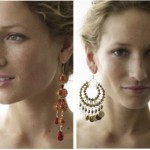How nice when our children, nephews or grandchildren have fun and never get tired of playing with that toy we give them! How to find that perfect toy and surprise them?
It doesn’t matter if it’s expensive or cheap, if the advertising shows that it’s hilarious, if it’s “educational” or if it’s for a boy or a girl, the only thing that should matter is that, complying with the safety conditions, it’s a gift that the kids enjoy very, very much.
These are some examples provided by SF of the ideal toys for each age, which can serve as inspiration to find the perfect gift:

From 1 to 3 months
- Various mobiles
- Cloth books or figures with black and white drawings or images to stimulate the newborn’s vision
- Rattles
- Unbreakable mirror attached to the inside wall of the crib
- Varied music (nowadays there are very interesting singers with melodies that babies love)
From 4 to 7 months
- Soft balls, especially those that emit soft, pleasant sounds when moved
- Baby books made of vinyl, thick cardboard or fabric
- Toys that make sounds such as maracas, tamborines, campanitas, etc., cloth pianitos
- Transparent rattles
- Toy for the bathtub, which floats, can be squeezed and/or filled with water
- Gym or didactic blanket
From 8 to 12 months
- Toys that can be stacked, in different shapes, colors, and sizes as large fabric blocks
- Unbreakable cups, buckets and other containers
- Large dolls and puppets
- Books with small windows
- Toy phones
- Toys to push or drag
- Balls of all sizes (not so small, to avoid choking)
- Cars, trucks and other toy vehicles made of any flexible material and with no tips or detachable parts.
From 12 to 24 months
- Simple puzzles
- Toys for digging (shovel, bucket, rake)
- Outdoor games: toboggan, hammock, sandbox, etc.
- Tricycle for beginners
- Embedding Toys
- Toys that encourage them to imitate everyday situations (kitchen, telephone, vacuum cleaner, etc.).
- Animals and/or stuffed animals
- Dolls and puppets of all sizes
- Musical Instruments
2 years
- Large stackable buckets made of fabric or material for this age group
- Toys with pieces to build (taking care that the pieces are not so small to avoid accidents)
- Cardboard or cloth house, where you can hide, take your toys and have fun inside the fantasy house.
- Music for dancing and singing
- Farms with animals
- Dolls and accessories for dolls
- Trolleys to transport things
3 years
- Games with mass, clay, plasticine
- Simple board games such as cards, ludo, dominoes
- Puzzle (with 20 or 30 large pieces that represent a challenge for the child but can put it all together)
- Clothing to dress up
- Books
- Cars with pedals
- A basketball game
- Plastic bowling alley
- Braids
- Bicycle with wheels
- Skateboard
4 years
- Blackboard/Magic board
- Toys to make bubbles
- Paintings, brushes, watercolours, cases
- Books with short stories and drawings, for coloring or pasting figures
- Toys and dolls to assemble and disassemble
- Puppet and puppet theatre
- Coloured pencils and crayons
- Board games where they have a challenge according to their age and ability (catching small fish, arranging pieces so that they do not fall, etc.).
- Karaoke with microphone
- Trade toys and adult activities such as toolboxes, nurse’s boxes, doctor’s boxes, etc.
5 years
- Organizing games: villages, garages, cities, farms, etc.
- Kaleidoscope
- Games based on sports such as ball, football bow, basketball hoop, racket, etc.
- Dolls
- Children’s microscope
- All types of costumes and makeup boxes
- Scout games and accessories (binoculars, flashlight, walkie-talkie, etc.)
- Car tracks, trains with tracks
- Visual Memory Games
- Jumping rope, elastic
- Templates and molds for drawing and painting
6 to 8 years
- Experimental games
- Microscope, telescope
- Magic Games
- Sets of pieces to assemble or glue
- Puppets
- All types of instruments: guitar, harmonica, organ, drums, etc.
- Sewing or knitting games
- Beads and threads for making bracelets, necklaces, etc.
- Games for make-up, hairstyles
- Craft games such as cold ceramics to create more difficult shapes and dolls and then paint
- Games to paint with tempera, watercolor, etc.
- Gardening games to plant your own seedling
- Cooking games with simple recipes to do with parental supervision
- Race Circuits
- Photo camera
- Skates
- More complex table games to share with family and friends (naval battle, memotest, cards, dominoes, etc.).
- Digital games (link to video games)
What should I consider when choosing a toy?
Finding the ideal toy for the child is a task that needs time and attention, because among so many advertising stimuli, prices and fashions it is sometimes difficult not to get dizzy and choose well.
As for having a guide, parents, uncles or grandparents can rely on these tips to find the perfect toy:
- In principle, it is essential to look at and give importance to the safety instructions of the toy, also verifying that it is the right one for the age of the baby or child.
- Do not buy toys in non-specialized establishments and opt for responsible shops where original toys are sold and where they can inform, advise, know the origin of the toy and enable a future change or claim if necessary.
- Choose toys that allow the protagonism of the child and an active attitude so that they are really stimulating and fun for them, avoiding that they become mere spectators of the toy.
- Do not choose toys only because of their instructive or “educational” character. The toy must be fun and interesting for the child, and if it is not, it does not fulfill its purpose.
- Try not to be carried away by advertising, which can often be misleading. Although it must be taken into account in order to know what is in the toy stores or what the children may like, it is not necessarily necessary to buy that which is in fashion or which is constantly repeated in the advertising guidelines.
- Don’t buy a particular toy because it’s expensive. Price does not go hand in hand with fun or quality. A cheap toy can be a lot of fun for kids and an expensive, sophisticated and complex toy may not be enriching.
- Don’t decide based on your own taste: choosing based on what you played or liked to do as a kid is not always the best option, because times have changed and kids’ tastes, in part, too.
- Knowing what you’re buying: whether it’s a game for consoles, a toy or a board game, it’s important for adults to know how it works, how it’s played, what the characters are, the rules, etc. Because there are games with slogans that are not suitable or ideal for children.
- Choose a toy that is not sexist, warlike, violent or that transmits values contrary to those inculcated at home.
- Do not always give away a similar toy or the same type of game each time because the child “loves” it. Variety helps the child enjoy diverse experiences and stimulates development from different points of view.




